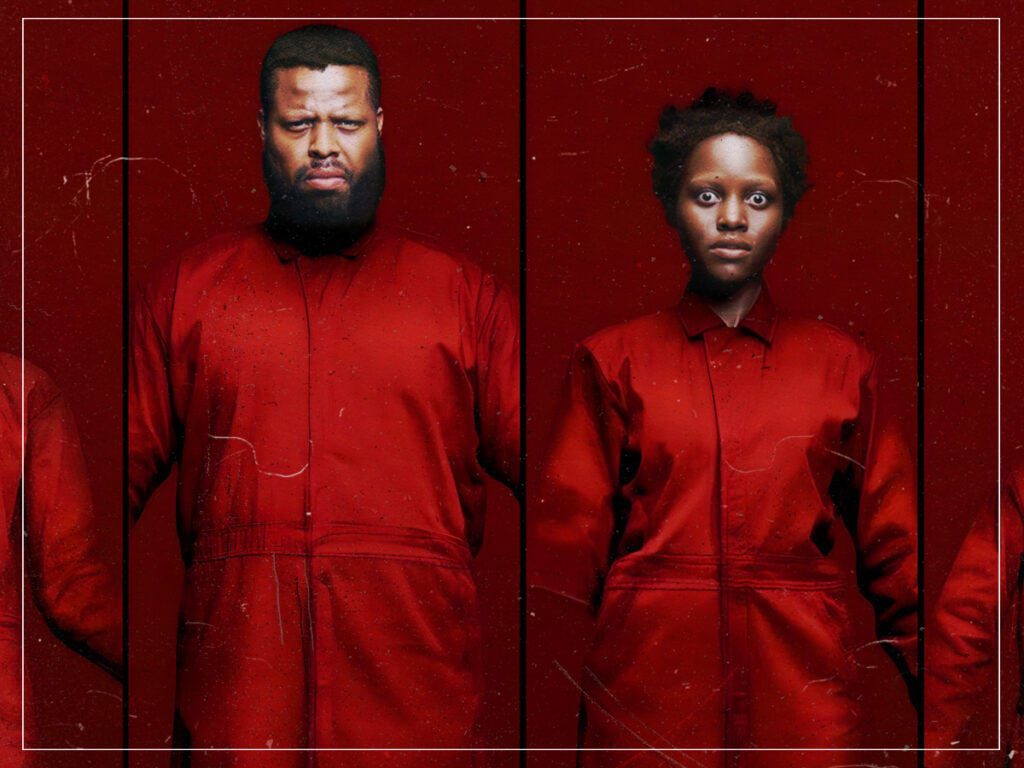Explaining the ending of Jordan Peele’s horror movie ‘Us’
 Posted On
Posted On
(Credits: Far Out / Universal Pictures)
In 2019, Jordan Peele followed up his pioneering horror movie Get Out with an arguably even more chilling work. Us delivers the fear factor throughout while serving as a parable for the treatment of marginalised underclasses in the modern United States. The twist in the tale in the film’s closing moments really drives home its message.
Whereas Get Out satirises the plantation system and racist ideology of slave-era America – and its residual effects ever since – Us has an even more topical focus. With the same razor-sharp skewer as Get Out, Us savages class divisions within the United States, with more than a few nods to the racial segregation of the Jim Crow era as well as the Black Lives Matter movement.
And so, the film’s ending defies audience expectations with a beautiful piece of darkly comic irony that holds up a mirror to the present state of society. What’s more, it involves a double twist, which first sends us one way and then the other. No wonder it needs unpacking.
Tension builds towards a climax in the film as its protagonist, Adelaide, chases her doppelgänger into a house of mirrors, which was also the setting of the movie’s disturbing opening scene. The lookalike, Red, is part of a violent horde of duplicate versions of each person in America known as “The Tethered”, who are running rampant across the country. And she has kidnapped Adelaide’s son, Jason.
Who are “The Tethered”?
It was Adelaide who first discovered the existence of The Tethered when she came across Red in the same house of mirrors as a little girl. After following Red into an underground space full of classrooms and corridors to retrieve Jason, Adelaide discovers from her double the meaning of what is going on.
Red and the other Tethered have been kept hidden from society for generations after the government experiment which created them went wrong. They live off fed rabbit meat and mimic the behaviour of their untethered doubles, who live above them on the earth’s surface.
The existence Red describes is intended to be analogous to the poor and working class in society, who survive on poor quality food, study in a subpar education system, do banal, thankless work, and are forced to imbibe the culture of the wealthy elites above them.
Once Red has made herself clear, a fight scene ensues as she attempts to kill Adelaide. But Adelaide is too strong for her, strangling her to death just as Red apparently tried to when the two met as girls.

The twist within a twist
Once Adelaide and Jason are back above ground, all seems well with Adelaide and her family until she relives in her mind the night she first met Red. And realises that it’s she, in fact, who is the original Red. When they met in the house of mirrors as girls, she strangled Adelaide until she was unconscious and substituted herself into Adelaide’s life.
This ending explains why Adelaide stopped talking months after the incident. She was, in reality, Red, who had lived in an underground dormitory up to that point and hadn’t received a proper education.
In the film’s final close-up shots, we see Red (appearing as Adelaide) looking at her son Jason. As he looks back, he pulls a Halloween mask down over his face.
There is so much symbolism to unpack in these final moments of Us. Some of it doesn’t quite land on-screen, but it is brilliantly and ambitiously visualised, as we’ve come to expect from Jordan Peele.
The Red-Adelaide switch illustrates what little difference there is between two human beings forced to live dramatically different lives. There is nothing biologically different about them, yet one has a comfortable, middle-class existence above ground, while the other is effectively her slave.
And they can so easily switch places through a single, accidental act. The act in question could be seen as a superficial social mobility, which itself involves violently stepping on those below you to move up the ladder. Or it could even imply the violence of social revolution.
Either way, Peele’s overarching point is that the prevailing social order is not what it seems and that its present state of uneasy equilibrium could transform into its opposite when we least expect it. We see transformation play out in the movie’s finale, as The Tethered form a human chain in a direct subversion of a Reagan-era public fundraising event.
[embedded content]

